<Back to Index>
- Writer André Breton, 1896
- Writer Louis Aragon, 1897
PAGE SPONSOR
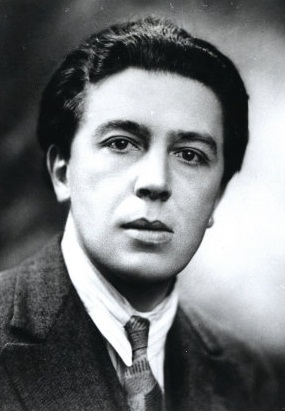
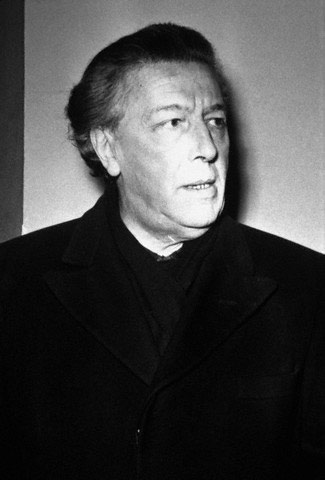
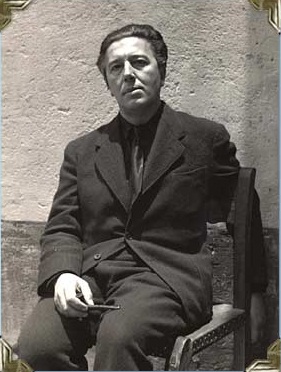
André Breton (19 February 1896 – 28 September 1966) was a French writer and poet. He is known best as the founder of Surrealism. His writings include the first Surrealist Manifesto (Manifeste du surréalisme) of 1924, in which he defined surrealism as "pure psychic automatism".
Born to a family of modest means in Tinchebray (Orne) in Normandy, he studied medicine and psychiatry. During World War I he worked in a neurological ward in Nantes, where he met the devotee of Alfred Jarry, Jacques Vaché, whose anti - social attitude and disdain for established artistic tradition influenced Breton considerably. Vaché committed suicide at age 24, and his war time letters to Breton and others were published in a volume entitled Lettres de guerre (1919), for which Breton wrote four introductory essays.
Breton married his first wife, Simone Kahn, on 15 September 1921. The
couple relocated to rue Fontaine # 42 in Paris on 1 January 1922. The
apartment on rue Fontaine became home to Breton's collection of more
than 5,300 items: modern paintings, drawings, sculptures, photographs,
books, art catalogs, journals, manuscripts and works of popular and
Oceanic art.
In 1919 Breton initiated the review Littérature with Louis Aragon and Philippe Soupault. He also associated with Dadaist Tristan Tzara. In 1924 he was instrumental in the founding of the Bureau of Surrealist Research.
In a publication The Magnetic Fields (Les Champs Magnétiques), a collaboration with Soupault, he implemented the principle of automatic writing. He published the Surrealist Manifesto in 1924, and was editor of the magazine La Révolution surréaliste from 1924. A group of writers became associated with him: Philippe Soupault, Louis Aragon, Paul Éluard, René Crevel, Michel Leiris, Benjamin Péret, Antonin Artaud, and Robert Desnos.
Anxious to combine the themes of personal transformation found in the works of Arthur Rimbaud with the politics of Karl Marx, Breton joined the French Communist Party in 1927, from which he was expelled in 1933. During this time, he survived mostly by the sale of paintings from his art gallery.
In 1935, there was a conflict between Breton and Ilya Ehrenburg during the first "International Congress of Writers for the Defense of Culture" which opened in Paris in June. Breton had been insulted by Ehrenburg — along with all fellow surrealists — in a pamphlet which said, among other things, that surrealists were "pederasts". Breton slapped Ehrenburg several times on the street, which resulted in surrealists being expelled from the Congress. Crevel, who according to Salvador Dalí, was "the only serious communist among surrealists" was isolated from Breton and other surrealists, who were unhappy with Crevel because of his homosexuality and annoyed with communists in general.
In 1938, Breton accepted a cultural commission from the French government to travel to Mexico. After a conference at the National Autonomous University of Mexico about surrealism, Breton stated after getting lost in Mexico City (as no one was waiting for him at the airport) "I don't know why I came here. Mexico is the most surrealist country in the world".
However, visiting Mexico provided the opportunity to meet Leon Trotsky. Breton and other surrealists traveled via a long boat ride from Patzcuaro to the town of Erongaricuaro. Diego Rivera and Frida Kahlo were among the visitors to the hidden community of intellectuals and artists. Together, Breton and Trotsky wrote a manifesto Pour un art révolutionnaire indépendent (published under the names of Breton and Diego Rivera) calling for "complete freedom of art", which was becoming increasingly difficult with the world situation of the time.
In 1939, Breton collaborated with artist Wifredo Lam on the publication of Breton's poem "Fata Morgana", which was illustrated by Lam.
Breton was again in the medical corps of the French Army at the start of World War II. The Vichy government banned his writings as "the very negation of the national revolution" and Breton escaped, with the help of the American Varian Fry and Harry Bingham, to the United States and the Caribbean during 1941. Breton got to know Martinican writer Aimé Césaire, and later composed the introduction to the 1947 edition of Césaire's Cahier d'un retour au pays natal. During his exile in New York City he met Elisa, the Chilean woman who would become his third wife.
In 1944, he and Elisa traveled to the Gaspé Peninsula in Québec, Canada, where he wrote Arcane 17, a book which expresses his fears of World War II, describes the marvels of the Rocher Percé and the extreme northeastern part of North America, and celebrates his new romance with Elisa.
Breton returned to Paris in 1946, where he opposed French colonialism (for example as a signatory of the Manifesto of the 121 against the Algerian war) and continued, until his death, to foster a second group of surrealists in the form of expositions or reviews (La Brèche, 1961 – 1965). In 1959, he organized an exhibit in Paris.
By the end of World War II André Breton decided to embrace anarchism explicitly. In 1952 Breton wrote "It was in the black mirror of anarchism that surrealism first recognized itself." "Breton was consistent in his support for the francophone Anarchist Federation and he continued to offer his solidarity after the Platformists around Fontenis transformed the FA into the Federation Communiste Libertaire. He was one of the few intellectuals who continued to offer his support to the FCL during the Algerian war when the FCL suffered severe repression and was forced underground. He sheltered Fontenis whilst he was in hiding. He refused to take sides on the splits in the French anarchist movement and both he and Peret expressed solidarity as well with the new FA set up by the synthesist anarchists and worked in the Antifascist Committees of the 60s alongside the FA."
André Breton died in 1966 at 70 and was buried in the Cimetière des Batignolles in Paris.
Breton was an avid collector of art, ethnographic material and unusual trinkets. He was particularly interested in materials from the northwest coast of North America. During a financial crisis he experienced in 1931, most of his collection (along with his friend Paul Éluard's) was auctioned. He subsequently rebuilt the collection in his studio and home at rue Fontaine 42. The collection grew to over 5,300 items: modern paintings, drawings, sculptures, photographs, books, art catalogs, journals, manuscripts and works of popular and Oceanic art.
After Breton's death on 28 September 1966, Breton's third wife, Elisa, and his daughter, Aube, allowed students and researchers access to Breton's archive and collection. After thirty - six years, when attempts to establish a surrealist foundation to protect the collection were opposed, the collection was auctioned by Calmels Cohen at Drouot - Richelieu. A wall of the apartment is preserved at the Centre Georges Pompidou.
Nine previously unpublished manuscripts, including the Manifeste du surréalisme, were auctioned by Sotheby's in May 2008.
Breton married three times:
- His first wife, from 1921 to 1931, was Simone Collinet, née Simone Kahn (1897 – 1980).
- His second wife was Jacqueline Lamba, with whom he had his only child, a daughter named Aube.
- His third wife was Elisa Claro.
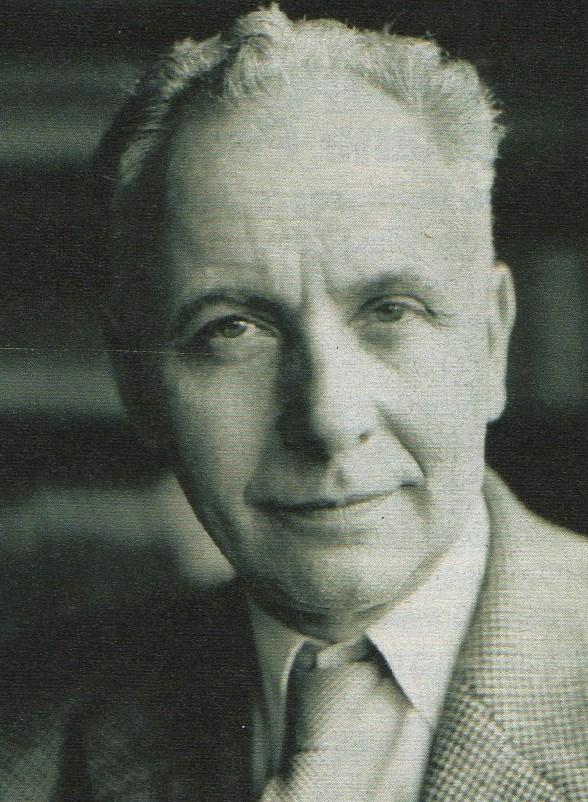
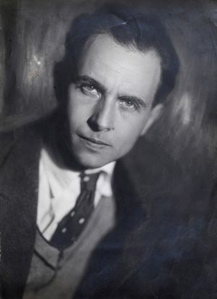
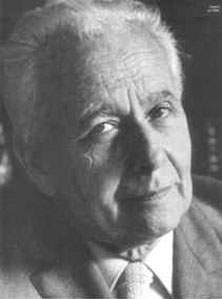
Louis Aragon (born Louis Andrieux) (October 3, 1897 – December 24, 1982), was a French poet, novelist and editor, a long time member of the Communist Party and a member of the Académie Goncourt.
Aragon was born and died in Paris. He was raised by his mother and maternal grandmother, believing them to be his sister and foster mother, respectively. His biological father, Louis Andrieux, a former senator for Forcalquier, was married and thirty years older than Aragon's mother, whom he seduced when she was seventeen. Aragon's mother passed Andrieux off to her son as his godfather. Aragon was only told the truth at the age of 19, as he was leaving to serve in the First World War, from which neither he nor his parents believed he would return. Andrieux's refusal or inability to recognize his son would influence Aragon's poetry later on.
Having been involved in Dadaism from 1919 to 1924, he became a founding member of Surrealism in 1924, with André Breton and Philippe Soupault under the pen name "Aragon". In the 1920s, Aragon became a fellow traveler of the French Communist Party (PCF) along with several other surrealists, and joined the Party in January 1927. In 1933 he began to write for the party's newspaper, L'Humanité, in the "news in brief" section. He would remain a member for the rest of his life, writing several political poems including one to Maurice Thorez, the general secretary of the PCF. During the World Congress of Writers for the Defense of Culture (1935), Aragon opposed his former friend André Breton, who wanted to use the opportunity as a tribune to defend the writer Victor Serge, associated with Leon Trotsky's Left Opposition.
Nevertheless Aragon was also critical of the USSR, particularly after the 20th Congress of the Communist Party of the Soviet Union (1956) during which Joseph Stalin's personality cult was denounced by Nikita Khrushchev.
The French surrealists had long claimed Lewis Carroll as one of their own, and Aragon published his translation of The Hunting of the Snark in 1929, "shortly before he completed his transition from Snarxism to Marxism", as Martin Gardner puts it. Witness the key stanza of the poem in Aragon's translation:
| “ | Ils le traquèrent avec des gobelets ils le traquèrent avec soin Ils le poursuivirent avec des fourches et de l'espoir |
” |
Gardner, who calls the translation "pedestrian" and deems the rest of Aragon's writings on Carroll's nonsense poetry full of factual errors, says that there is no evidence that Aragon intended any of it as a joke.
Apart from working as a journalist for L'Humanité, Louis Aragon also became, along with Paul Nizan, editor secretary of the journal Commune, published by the Association des Écrivains et Artistes Révolutionnaires (Association of Revolutionary Writers and Artists), which aimed at gathering intellectuals and artists in a common front against fascism. Aragon became a member of the directing committee of the Commune journal in January 1937, along with André Gide, Romain Rolland and Paul Vaillant - Couturier. The journal then took the name of "French literary review for the defense of culture" (« revue littéraire française pour la défense de la culture »). With Gide's withdrawal in August 1937, Vaillant - Couturier's death in autumn 1937 and Romain Rolland's old age, Aragon became its effective director. In December 1938, he called as chief editor the young writer Jacques Decour. The Commune journal was strongly involved in the mobilization of French intellectuals in favor of the Spanish Republic.
In March 1937, Aragon was called on by the PCF to head the new evening daily, Ce soir, which he was charged with launching, along with the writer Jean - Richard Bloch. Ce soir attempted to compete with Paris - Soir. Outlawed in August 1939, Ce soir
was re-opened after the Liberation, and Aragon again became its lead,
first with Bloch then alone after Bloch's death in 1947. The newspaper,
which counted Emile Danoën among its collaborators, closed in March 1953.
In 1939 he married Russian born author Elsa Triolet, the sister of Lilya Brik, a mistress and common law wife of Russian poet Vladimir Mayakovsky. He had met her in 1928, and she became his muse starting in the 1940s. Aragon and Triolet collaborated in the left wing French media before and during World War II, going underground for most of the Nazi occupation.
Aragon was mobilized in 1939, and awarded the Croix de guerre (War Cross) and the military medal for acts of bravery. After the May 1940 defeat, he took refuge in the Southern Zone. He was one of several poets, along with René Char, Robert Desnos, Paul Éluard, Jean Prévost, Jean - Pierre Rosnay, etc., to join the Resistance, both through literary activities and as an actual organizer of Resistance acts.
During the war, Aragon wrote for the underground press Les Éditions de Minuit and was a member of the National Front Resistance movement. He participated with his wife in the setting up of the National Front of Writers in the Southern Zone. This activism led him to break his friendly relationship with Pierre Drieu La Rochelle, who had chosen Collaborationism.
Along with Paul Éluard, Pierre Seghers or René Char, Aragon would maintain the memory of the Resistance in his post war poems. He thus wrote, in 1954, Strophes pour se souvenir in commemoration of the role of foreigners in the Resistance, which celebrated the Francs - Tireurs et Partisans de la Main d'Oeuvre Immigrée (FTP-MOI).
The theme of the poem was the Red Poster affair, mainly the last letter that Missak Manouchian, an Armenian - French poet and Resistant, wrote to his wife Mélinée before his execution on 21 February 1944. This poem was then set to music by Léo Ferré.
At the Liberation, Aragon became one of the leading Communist intellectuals, assuming political responsibilities in the Comité national des écrivains (National Committee of Writers). He celebrated the role of the general secretary of the PCF, Maurice Thorez, and defended the Kominform's condemnation of the Titoist regime in Yugoslavia.
Sponsored by Thorez, Aragon was elected, in 1950, to the central
committee of the PCF. His post, however, did not protect him from all
forms of criticism. Thus, when his journal, Les Lettres françaises, published a drawing by Pablo Picasso
on the occasion of Stalin's death in March 1953, Aragon was forced to
make excuses to his critics, who judged the drawing iconoclastic. Through the years, he had been kept informed of Stalinist repression by his Russian born wife, and so his political line evolved.
In the days following the disappearance of Ce soir, in March 1953, Aragon became the director of L'Humanité 's literary supplement, Les Lettres françaises. Assisted by its chief editor, Pierre Daix, Aragon started in the 1960s a struggle against Stalinism and its consequences in Eastern Europe. He published the writings of dissidents such as Aleksandr Solzhenitsyn or Milan Kundera. The monetary loss caused by Les Lettres françaises led to its ceasing publication in 1972. It was later re-founded.
In 1956, Aragon supported the Budapest insurrection, provoking the dissolution of the Comité national des écrivains, which Vercors quit. The same year, he was nevertheless granted the Lenin Peace Prize. He now harshly condemned Soviet totalitarianism, opened his magazines to dissidents, and condemned show trials against intellectuals (in particular the 1966 Sinyavsky - Daniel trial). He strongly supported the student movement of May '68, although the PCF was skeptical about it. The crushing of the Prague Spring in 1968 led him to a critical preface published in a translation of one of Milan Kundera's books (La Plaisanterie). Despite his criticisms, Aragon remained an official member of the PCF's central committee until his death.
Beside his journalistic activities, Louis Aragon was also CEO of the Editeurs français réunis (EFR) publishing house, heir of two publishing houses founded by the Resistance, La Bibliothèque française and Hier et Aujourd'hui. He directed the EFR along with Madeleine Braun, and in the 1950s published French and Soviet writers commonly related to the "Socialist Realism" current. Among other works, the EFR published André Stil's Premier choc, which owed to the future Goncourt Academician the Stalin Prize in 1953. But they also published other writers, such as Julius Fučík, Vítězslav Nezval, Rafael Alberti, Yánnis Rítsos or Vladimir Mayakovsky. In the beginning of the 1960s, the EFR brought to public knowledge the works of non - Russian Sovietic writers, such as Tchinguiz Aïtmatov, or Russian writers belonging to the Khrushchev Thaw, such as Galina Nicolaëva, Yevgeny Yevtushenko's Babi Iar in 1967, etc. The EFR also published the first novel of Christa Wolf in 1964, and launched the poetic collection Petite sirène, which collected works by Pablo Neruda, Eugène Guillevic, Nicolas Guillen, but also less known poets such as Dominique Grandmont, Alain Lance or Jean Ristat.
Free from both his marital and editorial responsibilities (having ended publication of Les Lettres Françaises — L'Humanité 's literary supplement — in 1972), Aragon was free to return to his surrealist roots. During the last ten years of his life, he published at least two further novels: Henri Matisse Roman and Les Adieux.
Louis Aragon died on 24 December 1982, his friend Jean Ristat sitting up with him. He was buried in the parc of Moulin de Villeneuve, in his property of Saint - Arnoult - en - Yvelines, along his wife Elsa Triolet.
Various poems by Aragon have been sung by Lino Léonardi, Hélène Martin, Léo Ferré, Jean Ferrat, Georges Brassens, Alain Barrière, Isabelle Aubret, Nicole Rieu, Monique Morelli, Marc Ogeret,
et al. Many of his poems put into music by Jean Ferrat have been
translated into German by Didier Caesar (alias Dieter Kaiser) and are
sung by his Duo.
Aragon's poetry is diverse and varied. He favoured equally poetic prose and fixed - form verse, to which he brought a renewed sensibility. After a very free early period, marked by surrealism and its subversive language, Aragon returned to more classical forms (measured verse; rhyme, even). He felt that this was more in keeping with the national emergency during World War II. After the war, the political side of his poetry gave way more and more to lyricism for its own sake. He never went back on that embrace of classicism. He did however integrate a certain formal freedom with it, sometimes recalling the surrealism of his early days.
Countless poems by Aragon have been set to music and become popular as songs.
As a novelist he encompasses the whole ethos of the Twentieth century: surrealist novel, socialist realism, realism, nouveau roman. Indeed he was one of the founding personalities of the novel of his time.
In 2010, La Poste (French Post Office) issued 3 stamps honoring Louis Aragon.